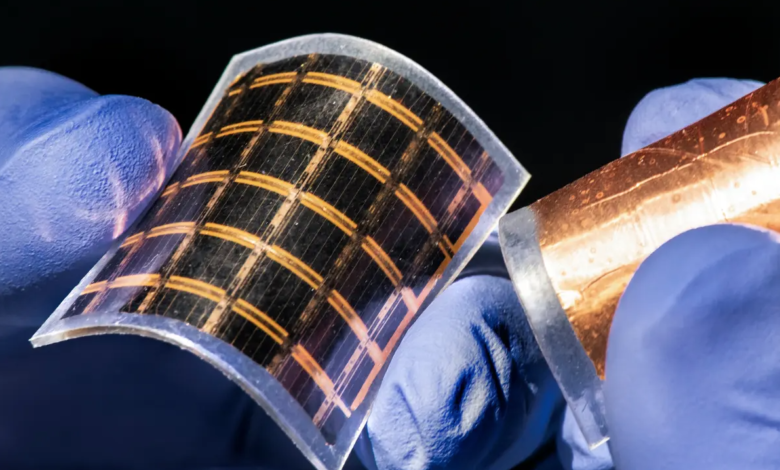New efficiency record for flexible solar cells

Perovskite: flexible solar cells vs rigid solar cells
(sustainabilityenvironment.com) – You can bend or twist them and they will always maintain their efficiency. And it will be a record efficiency. We talk about the new flexible solar cells in perovskite, created at the University of Tsinghua, China, and “told” in the publication on iEnergy. Professor Chenyi Yi with a group of colleagues from the Department of Electrical Engineering has developed a new manufacturing process that can make a breakthrough in the industry, achieving reproducible results and increasing production scalability.
Perovskite flexible solar cells have vast application potential in the field of mobility (including aerospace vehicles) and wearable electronics. However, compared to their rigid version, they appear far behind in terms of the efficiency of converting light into electricity. The cause? The soft and uneven characteristics of the base material, consisting of polyethylene terephthalate (PET), on which perovskite films are constructed. And it’s not the only problem. This technology also suffers from a shorter lifespan than rigid solar cells. The pores in the substrate material, in fact, allow water and oxygen to reach perovskite, causing its degradation.
Deposition with a chemical bath
The Tsinghua team may have found a solution to both challenges. Scientists, in collaboration with colleagues of the National Center for Nanoscience and Technology in Beijing, have developed a new manufacturing technique. In detail, the group used chemical bath deposition (CBD) to deposit tin oxide – the electron transport layer – on a flexible substrate without the need for a strong acid. In this way they were able to exert greater control on the growth of the oxide obtaining a uniform and dense result. “This method differs from previous research because it uses tin sulfate instead of tin chloride as a precursor to tin for deposition, making it compatible with acid-sensitive flexible substrates,” Yi said.
Improving the realization of the electron transport layer has direct consequences on efficiency, but the new process has also been shown to increase the stability of perovskite and thus the life of the cell itself. The result? The new perovskite flexible solar cells have achieved a conversion efficiency of 25.09%, certified to 24.90%. And they kept 90% of their initial value even after being folded 10,000 times.





